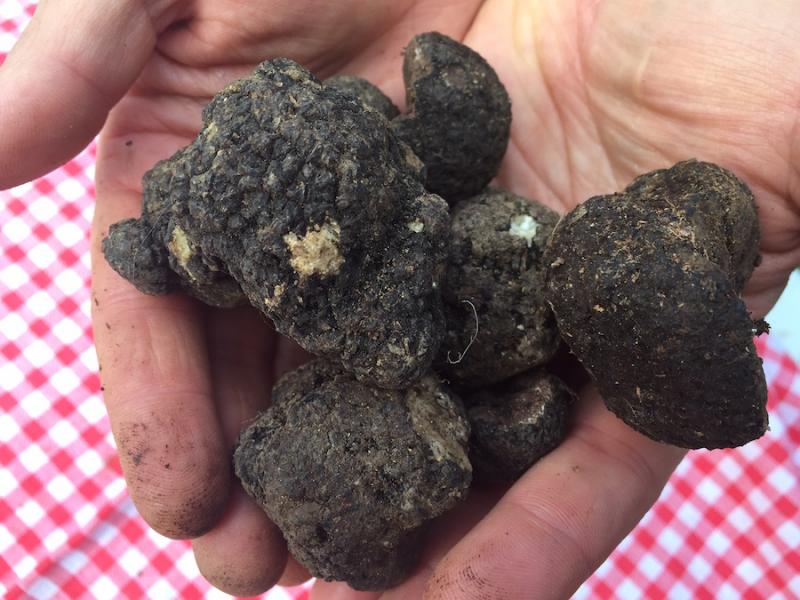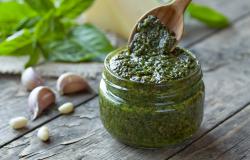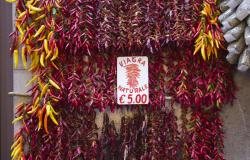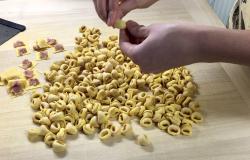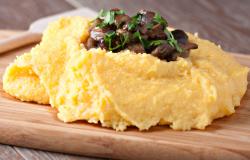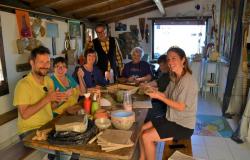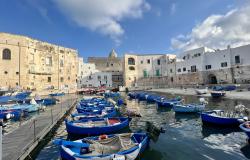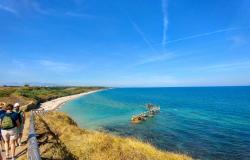Oscar and Lady, two adorable Lagetto Romagnolo pups, wagged their tails enthusiastically sniffing the ground under an oak tree. Oscar started digging the soil and, within a few seconds, he had a large dark truffle in his teeth. Welcome to Abruzzo, the land of truffles!
Very few foreign visitors know that Abruzzo is one of the leading suppliers of Italian truffles. In fact, 60% of fragrant tubers that are harvested in the country every year come from Abruzzo and Molise. During the Renaissance period until the 1800s, the regions provided some of the best truffles for aristocratic tables. Lately, the pungent tuber industry has been reborn with more than six thousand registered foragers (called “tartufai” in Italian), about 2000 truffle farmers and 40 companies that sell and process the fungus. Abruzzo has the perfect environment: the climate and numerous olive groves, oaks and hazelnut trees provide ideal conditions for several types of truffles: the prized white truffle (Tuber magnatum pico), black truffle (Tuber melanosporum), two varieties of summer truffle (Tuber aestivum), winter truffle (Tuber brumale) and the bianchetto truffle (Tuber borchii). This staggering variety means that local tartufai hunters are busy almost all year around.
I went truffle hunting with Alessandro Sticca and his young but well-trained tuber-sniffer dogs, Oscar and Lady. The pups ran around with their noses to the ground constantly cheered on by Alessandro “Dai, dai, cerca!” (“Come on, come on, search!”). On most of the photos I took, there were blurred balls of fluff representing the happy energetic pups. A few times, I tried to ask Alessandro a question only to see him dashing off to crouch on the ground next to a spot where Oscar or Lady were furiously digging. “I have to be quick and pull them away or they will gobble up the delicious tuber.” Our hunt was successful: in less than two hours we found a few good-sized black truffles and a tiny fragrant white one. Alessandro told me that the largest white truffle he has found so far weighed 270 grams. “When Oscar dag it out, I couldn’t believe my eyes. I just stood there for a few minutes looking at it!”
Often tartufai learn foraging skills from their fathers but Alessandro is a self-taught truffle hunter. He is one of the new generation of local young farmers who are brimming with ideas, love their land and eager to learn. He has a honeybee farm, makes cheese, grows heritage grains. “Everyone knows that there are plenty of truffles here. I watched a few videos on YouTube to see how truffle hunting works and then bought two puppies of the Lagetto Romagnolo breed,” says Alessandro. Although some hunting dogs such as Cocker Spaniel, Jack Russel and Bracco are often used, Lagetto Romagnolo dogs with their sharp senses are considered the best for truffle searching.
 [Owner and dog are content with the day's catch]
[Owner and dog are content with the day's catch]
Buying a trained sniffer dog can set you back a few thousand euros, so Alessandro bought two young puppies and trained them for a few months relying on techniques he found in YouTube videos. “For the first two weeks I played with them 15-20 minutes every day throwing a ball and rewarding them when they brought it back to me. Then I started throwing the ball in high grass making Oscar and Lady rely on their sense of smell to find it.”
After a few more weeks, Alessandro covered the ball with soil, so the delighted puppies had to dig it out. After two months, it was time for the final stage. “I made holes in plastic Kinder Surprise eggs, put a few drops of truffle oil inside and buried them a few hours before letting the dogs out to look for them.” Once the canines passed the Kinder Surprise test, they were ready for the real hunt.
 [Searching for truffle gold]
[Searching for truffle gold]
Truffle foraging is notoriously competitive. Tartufai never reveal their best locations and often go hunting at the dawn, before anyone can see them. Local newspapers are full of reports about truffle-searching dogs being stolen or poisoned, cars burnt and tyres slashed by jealous competitors. It is all about the money. It is estimated that in 2014 the harvest of truffles in the region produced a net income of about 34 million euro. However, the real numbers might be much higher as the truffle business runs on cash transactions.
With well-trained canines an experienced tartufaio can make thousands of euros during the foraging season. The changing climate means that the precious tubers harvests are less predictable and the prices keep growing. The white truffle, unlike its black counterparts, cannot be cultivated and commands the highest prices, reaching over $4000 per kilo. For different varieties of black truffles prices range from $100 to $1000 a kilo. Alessandro says he stays in his area to avoid repercussions. “I keep it quiet and do not tell people how much truffles I find and where I go.”
Although most truffles from Abruzzo are sold abroad and in other Italian regions (some locals will tell you that many precious white truffles sold in Alba, Piedmont, come from Abruzzo), the fragrant tubers are one of the cornerstones of the region's cuisine. Excellent local oil is infused with truffles,they are added to frittata omelettes, generous shavings are scattered over pasta or fried eggs.
